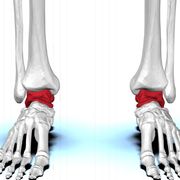Q. I'm a 24-year-old runner with a really frustrating lower leg injury. It started as a spot of localized, but very low-level pain on my left inner shin, a few inches above the ankle. It was very minor pain, but I freaked out that it could be a stress fracture. I got a bone scan, which showed that both legs had either severe shin splints or possible early-stage stress fractures. I was told to take two weeks off and then try to run, and if it still hurt, it was probably a fracture; if not, probably just shin splints.
I took the two weeks off and when I returned to running the pain was completely gone. But a few weeks later, I started feeling a similar pain in the other leg. If I stuck to easy-moderate speeds it was fine, but when I did track workouts the pain would come back, and linger for a few days. What could it be, and how could I treat it?
— Lindsay, California
A. If the bone scan was a three-phase study, an acute stress fracture should be abnormal in all three phases. Shin splints will demonstrate an elongated area of abnormality in the final phase only. If the study was delayed phase only, a stress fracture would demonstrate a small area of intense increased uptake, and shin splints would demonstrate a less intense, elongated area of increased uptake.
The fact that you were able to resume running without pain and you experience pain with speed work is more consistent with shin splints. When you run faster, you will rise up on your toes, placing greater stress on the lower leg muscles.
You should work on stretching your calf muscles and Achilles tendon. Strengthen the muscles in the lower leg by applying a weight (use an ankle weight) to your foot; point your foot inward, outward and up, 3 sets of 10 twice a day.
Stick with easy running until you’ve improved your leg strength and flexibility. After workouts, perform ice massage: freeze a paper cup full of water, unwrap the top of the cup, hold the bottom as a handle and rub the ice on your shins for 10-15 minutes.
Check with a sports medicine physician or your local running shoes specialist to make sure that you are wearing appropriate running shoes.
— Cathy Fieseler, M.D.
Ask the Doctor: Shin Splints or Stress Fracture?
What's the difference & what should I do about mine?
Watch Next


What to Know About Foot Stress Fractures

The 6 Most Common Causes of Lower Leg Pain

Does Speed Raise Your Risk of Stress Fracture?

6 Stress Fracture Warning Signs
Advertisement - Continue Reading Below
Advertisement - Continue Reading Below





